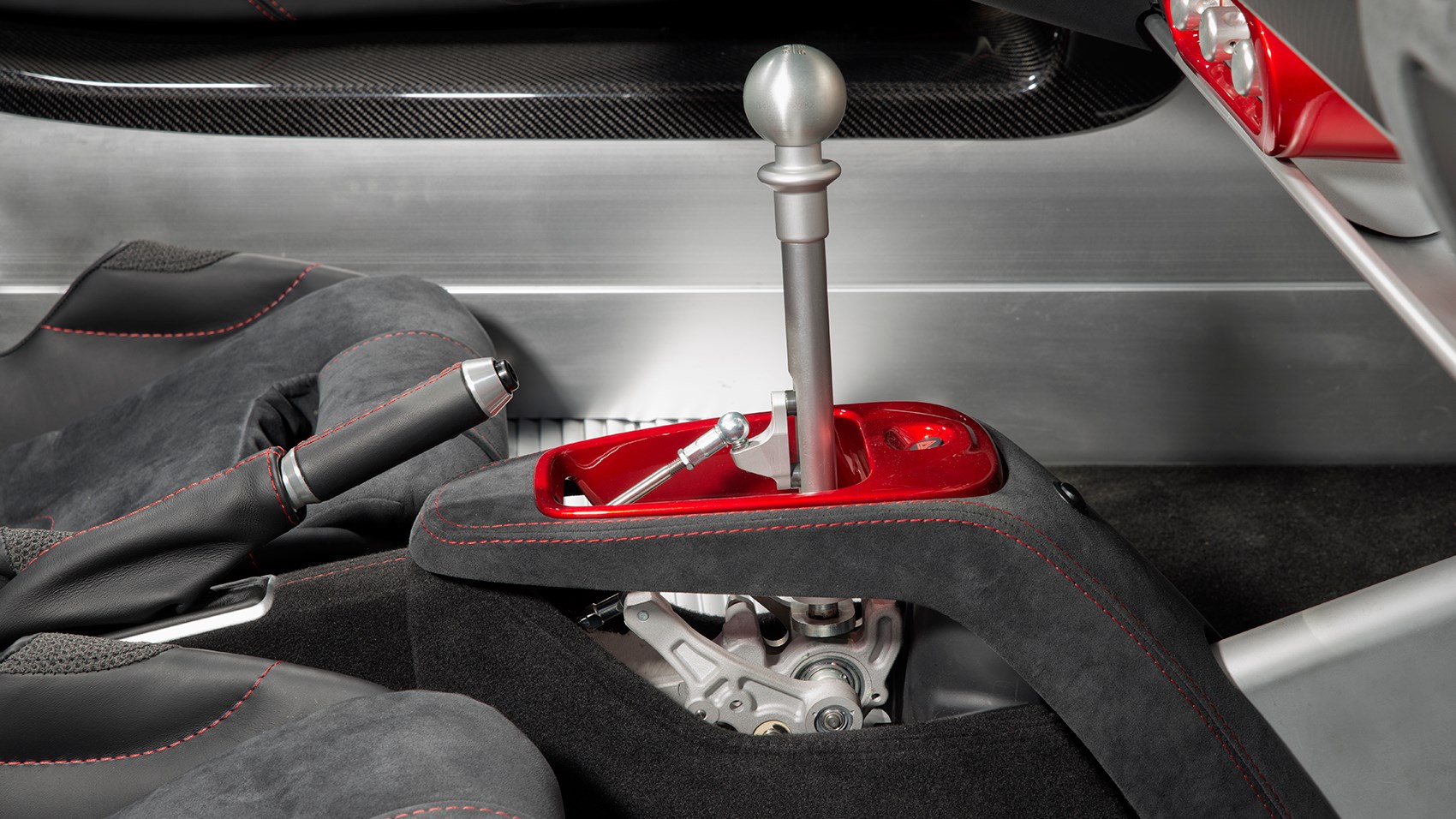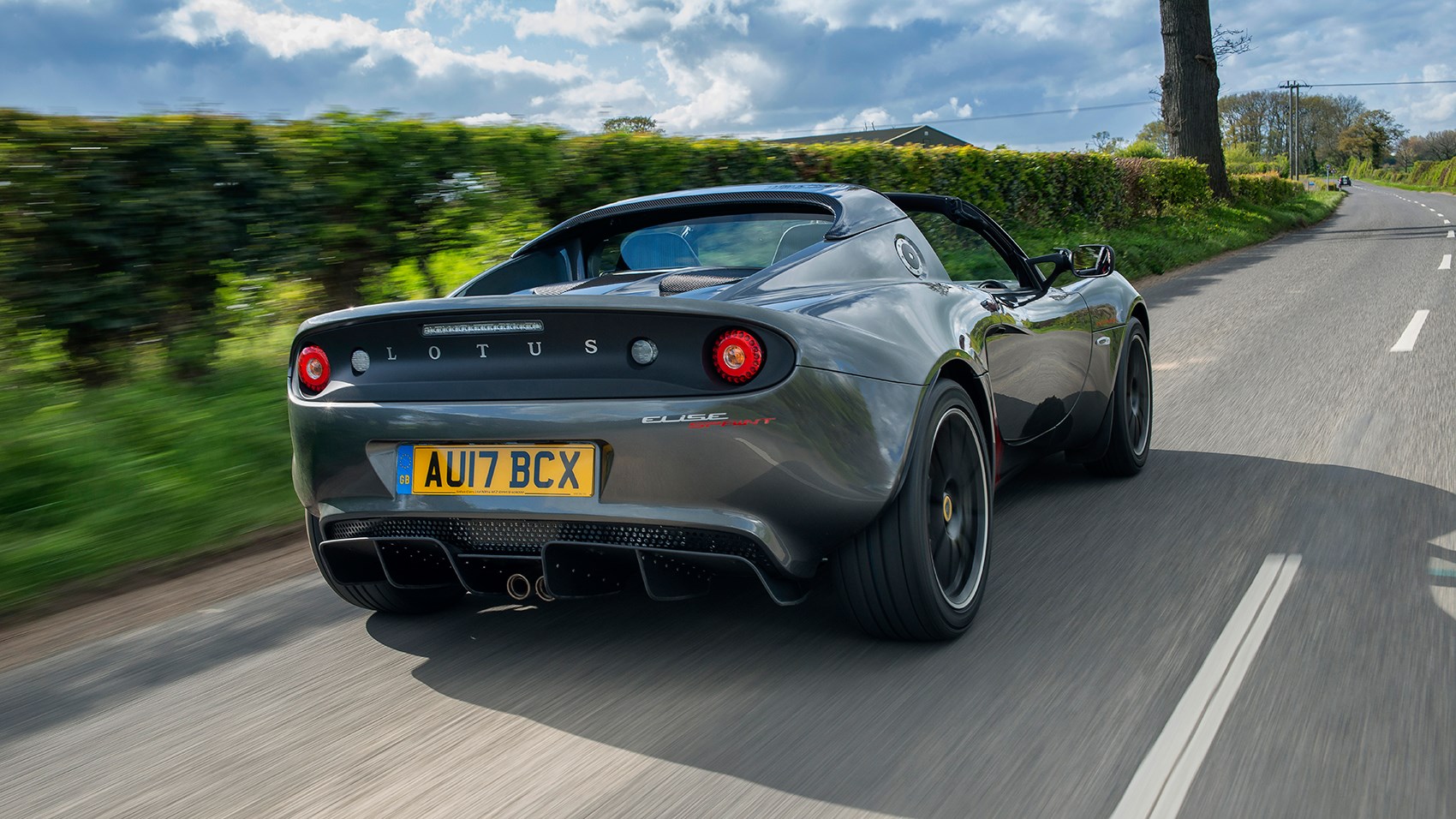► Lightest Lotus Elise since 1996 original
► Last significant update to current Elise
► On sale now, from £37,300
Lotus is giving its perennial Elise one final round of spit ’n’ polish to keep it as fresh as possible in the focused sports car market, ahead of an all-new model arriving in 2020.
While sprucing up the entire range for 2017, the Hethel-based outfit has also resurrected one of its most evocative badges for an even-lighter derivative: this is the Elise Sprint, that latter epithet last seen on the incredibly desirable 1973 Elan Sprint.
What Lotus has done is trim weight out of what was already a svelte car, down to an eye-catching headline figure of 798kg for the Sprint. However, that’s for the 134bhp naturally aspirated 1.6-litre model. Lotus also offers a further Elise Sprint 220 variant, which – as its numeral suggests – packs the 217bhp supercharged 1.8-litre Toyota four-pot.
This car is heavier than the 1.6, its ‘proper’ dry weight standing at 851kg (everything on board bar fuel and washer fluid), but even taking that into account, what we have here is a corking 255bhp-per-tonne power to weight ratio.
How has Lotus removed weight from a car that barely had any meat on its bones anyway?
With the use of lots of carbonfibre, and the almost fastidious attention to detail that is the Norfolk crew’s hallmark. Take, for instance, what looks like a simple aesthetic update at the rear, the removal of two of the Elise’s four tail-lights. You might think that was done purely to make the back end look more like the current Exige, but no – it actually shaves 500 grams from the kerb weight.

Then there’s one of the true highlights of the 2017MY Elise, the utterly glorious exposed gear linkage. It’s a real talking point and a thing of exquisite beauty; it also junks a further kilo from the car’s mass.
Everywhere you look, there’s more (or less, truthfully). The aluminium four-vane rear diffuser, the front clamshell… all of these items make the facelifted 2017MY Elise (featuring a wider grille and air intakes at the front) fully nine kilos trimmer than the 2016 variant.
But the Sprint is another step up, relieving buyers of £5000 more in the process. It receives up to 41kg of weight-saving goodness, including all the stuff mentioned for the Sport plus lightweight forged alloys with metal-spun rims (a clear nod to the Elan Sprint), a carbonfibre access panel, rollover hoop and engine cover, carbon sports seats in the cabin and a lithium-ion battery. Later in 2017, two-piece brake discs and Cup-spec dampers will also make an appearance.
So how does the Sprint 220 drive after its diet?
Absolutely sublimely. Getting on in years it may be (the Elise was launched in 1996 and, fundamentally, its underlying structure remains the same), but Lotus has constantly refined and improved the product during the course of two decades to leave us with a sports car that is still without equal in the clarity of feedback it offers.
The unassisted steering is the first thing that hits you, as it babbles a constant tirade of information from the minute the wheels are rolling. The ride is firm, understandably so for the body control the Elise requires, yet the damping is judged to allow it to lope along dual carriageways and amble about urban areas without feeling like it’s trying to shake loose your fillings.

The gearing and snickety-snick transmission action? Both great. The brakes are strong too, providing good bite and lovely pedal progression in equal measure.
All of which adds up to a sensational driver’s car. Grip and traction are off the charts, even in soaking conditions, and cleverly calibrated electronic control systems allow for a touch of rear-wheel slip without completely removing the safety net. Get really brave and turn the traction control off entirely, and you will find the Elise Sprint 220 is microscopically throttle-adjustable – slides, when they come, are progressive and controllable, unlike in an S1 Elise, where they invariably saw you chewing scenery.
Verdict
It doesn’t quite have the focus and intensity of the 2016 Cup 250, but by gum the Lotus Elise Sprint 220 gets close. It feels equally at home lapping a race track and banging off its rev limiter as it does pottering about town at 30mph in fifth gear.
The damping, the steering, the power delivery, the chassis balance… they’re all extraordinary. Living with one on a daily basis wouldn’t be the easiest thing in the world but it would offer thrills that nothing this side of an Ariel Atom could top.